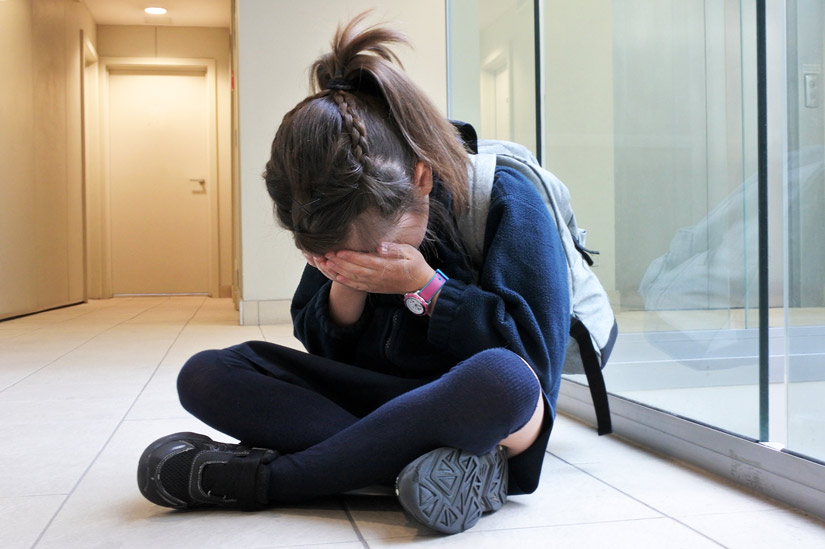Almost no one has a perfect childhood.
Even those with loving parents, financial security, and other positive factors in their lives are likely to experience a variety of negative situations, ranging from the minor to the truly traumatic.
For some, a traumatic experience or combination of traumas can have a lasting negative impact on their lives. That impact isn’t confined to bad memories. In fact, studies show that childhood trauma is often an underlying factor in future health problems and problematic decisions that can upend—or even shorten—lives.
The effect on life expectancy can be dramatic. Dr. Nadine Burke Harris, Surgeon General of California, has called childhood trauma a “toxin” and suggested that it can reduce life expectancy by 20 years.
If two decades of life potentially can be lost when children experience trauma, then it is essential that everyone do what can be done to limit these traumas and lessen their impact when they are unavoidable. A significant connection between these traumas and a shorter life expectancy is the correlation between adverse childhood experiences and addiction later in life.
Adverse Childhood Experiences (ACEs)
The original Adverse Childhood Experiences Study—which studied 17,500 adults—was built around 10 kinds of trauma that could affect children:
- Physical abuse
- Sexual abuse
- Emotional abuse
- Physical neglect
- Emotional neglect
- Parental mental illness
- Parental substance dependence
- Incarceration of a parent
- Parental separation or divorce
- Domestic violence
Additional studies have enlarged the list of adverse childhood experiences (ACEs):
- Racism
- Witnessing violence outside the home
- Bullying
- Having a parent deported
- Living in an unsafe area
- Being placed in foster care
- Homelessness
- Living in a war zone
- Being an immigrant
- Moving repeatedly
- Witnessing abuse of a sibling
- Involvement with the criminal justice system
- Attending a school that enforces a zero-tolerance discipline policy
In the original study—when the ACE list was limited to 10 potential traumas—the prevalence of childhood trauma in a person’s life was associated with a range of negative outcomes. The study suggested that 67% of adults have undergone at least one ACE and 12% of adults have experienced four or more. Those numbers are almost certainly higher when the larger list of 23 possible traumas is considered.
The study revealed that a person with an ACE score of 4 is:
- 2-4 times more likely to use alcohol or other drugs and to begin using them at a younger age
- 4 times more likely to develop depression
- 7 times more likely to develop alcoholism
- 12 times more likely to consider or attempt suicide
Adding a fifth ACE to a person’s individual inventory of trauma worsens the outlook fairly dramatically:
- 3 times more likely to misuse prescription pain medication
- 7-10 times more likely to use, inject, and/or become addicted to illegal drugs
- Brain changes lead to impairment of decision-making processes
The effects of negative experiences in childhood aren’t limited to the realm of memory and emotion. Traumatic experiences can actually change the makeup of the brain. Studies show that ACEs can:
Damage the pleasure and reward centers of the brain, increasing the likelihood of substance abuse
Inhibit the function of the prefrontal cortex, undermining impulse control
Lead to continuous activation of the amygdala—the brain’s fear response area—which in turn leads to the ongoing release of dangerous levels of stress hormones
Reframing Addiction in Light of ACEs
If the likelihood of addiction is increased by negative experiences in childhood, should we be looking at addiction from a different point of view? What if we thought of addiction as “ritualized compulsive comfort seeking” and viewed it as a normal—if problematic—response to ACEs? That’s the suggestion of Dr. Daniel Sumrok, director of the Center for Addiction Sciences at the University of Tennessee Health Science Center’s College of Medicine. In Dr. Sumrok’s extensive experience, 92% of the patients he treats for addiction have an ACE score of at least three.
His practices when addressing the issues around ritualized compulsive comfort seeking are in keeping with the approach employed by the Bel Aire Recovery Center:
- Providing individual and group therapy
- Treating people with respect
- Providing medication-assisted treatment
- Helping patients develop healthier coping mechanisms
- Stressing the value of resiliency
Of course, the best course of action is to prevent ACEs whenever possible. The Centers for Disease Control and Prevention (CDC) offers ACEs training for parents and professionals working with families that is designed to build understanding about trauma and reduce its prevalence among children.
But not all traumas can be prevented. Building personal resilience is one positive way to cope with the lingering negative effects of ACEs. Resilient individuals tend to exhibit similar traits and internal resources, including:
- Optimism
- Cognitive flexibility
- Active coping skills
- A supportive social network
- Attention to their personal physical well-being
- A strong personal moral compass
Personal resilience can grow over time with consistent effort and support—and the results can help lessen the continuing negative impact of experiences from childhood. The same traits and resources that build resiliency are also key factors in overcoming addiction. Bel Aire Recovery Center, a leading Kansas addiction treatment center, can help you build resiliency via a variety of therapies and approaches including talk therapy, music and art therapy, yoga, mindfulness training, and more.




